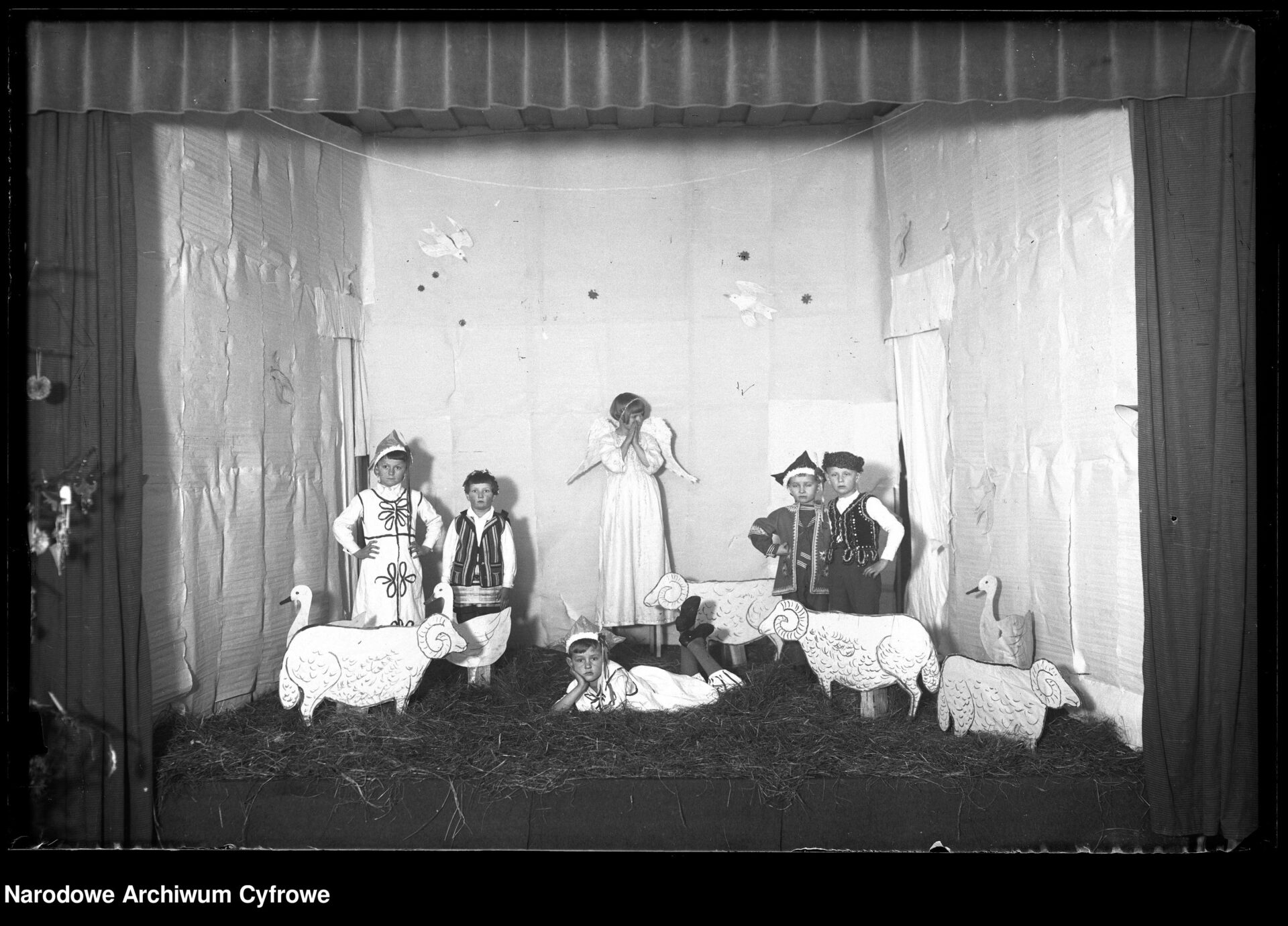A kind of Christmas caroling, “pastuszkowanie” is the Polish Highlanders’ tradition of singing Christmas carols and preaching the Good News about Jesus Christ’s birth by Little Shepherds – kids or young men with shepherd’s crooks.
Preparations began a few days before Christmas. An important element was learning carols and wishes, dialogues and the practicing the performance. The period of carolling usually began on Boxing Day, although in some places caroling began already on Christmas Eve. The celebrations were mainly attended by young people, mostly teenage boys. This custom was widespread in Cieszyn Silesia, Moravia, Slovakia and the Carpathians, and took its local forms, variations and variants both in form and content.
Some of the shepherds (Betlejkorze), had Christmas cribs with them. This Nativity scene (Betlejka) with figures of the Holy Family and Three Kings was made of cardboard or wooden box covered with colourful papers. The roof of the Nativity scene was made of straw, and inside it was lighted by a candle.

In addition to white shirts, the boys were often covered in sheepskin coats, which were girded at the hips with belts. Also, they hung a cardboard ribbon covered with tissue paper and stars across their breasts. They put a tall, colorful cardboard crown on their heads, and held a long stick in their hands. It was common for them to wear sheepskin jackets or tall paper caps.
Through singing, dialogues, and gestures, they told the story of Jesus’ birth. Shepherds were given sweets, nuts, dried fruits, cakes, and money by rich farmers as gifts for preaching the Good News.
Little Shepherds can still be found in Cieszyn Silesia, e.g. in Koniaków, Jaworzynka and Istebna. In the last 25 years, a renaissance of this tradition has been observed.
